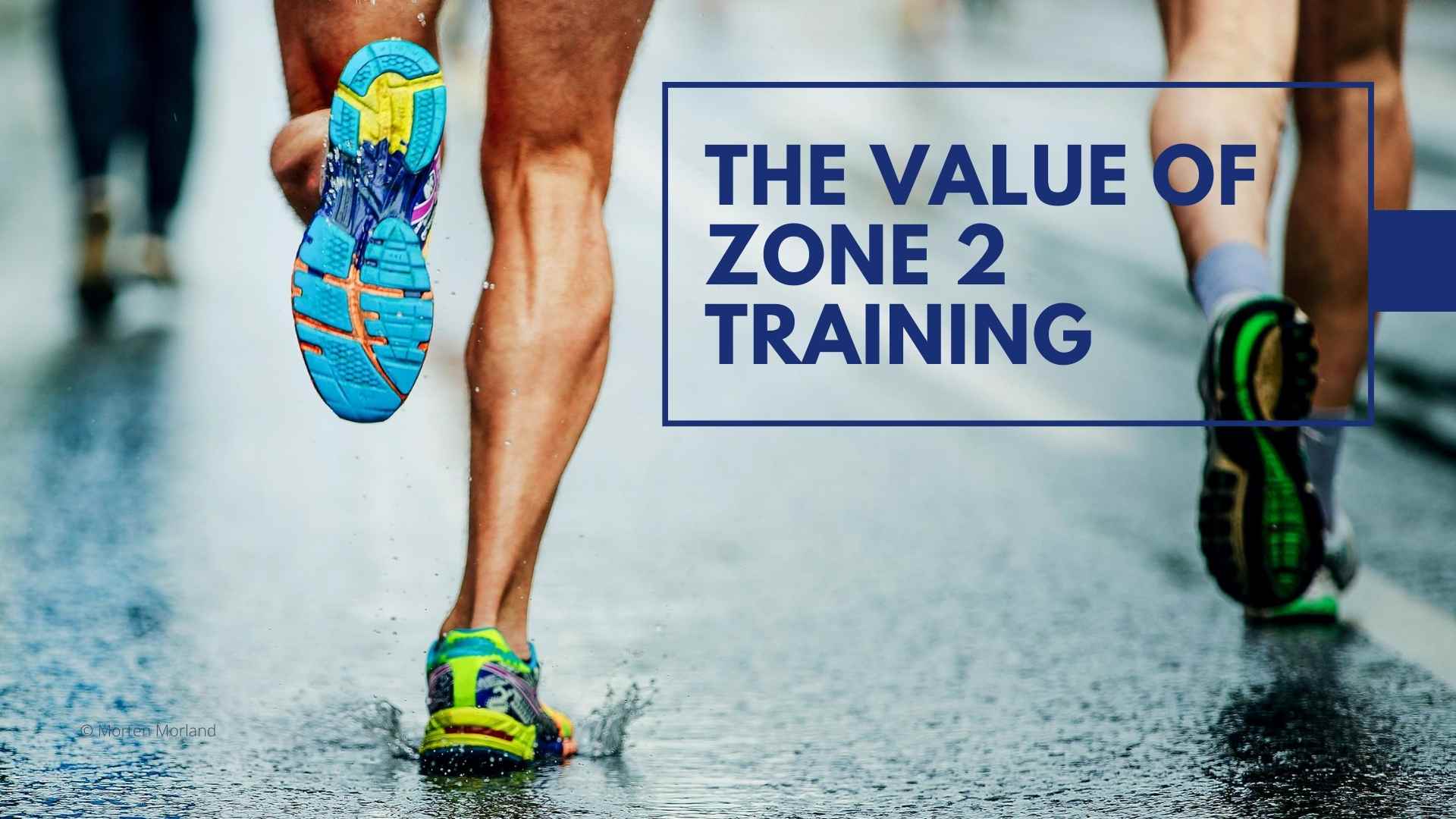
31 Aug The Value of Zone 2 Training
Man! You know Francine, she gives it to me straight. We know she does not like it when I talk too much. And you probably can guess she hates it when I talk to her about meditation and mindset. Now imagine what happened the other day when I told her: “we are going to use your apple watch today and try to run at zone 2 for an hour.” She did not know what Zone 2 was so she was game, initially. Twenty minutes in when I kept slowing her down to keep her heart rate low (in the second lowest zone out of six), she got pissed. “Is this a running meditation, Juan? Are we going to connect with Pacha Mama now?” I laughed; she trusts me. She also hates it when I explain her stuff with too much detail. So I gave her the one phrase version of this post, and we went on with our run.
However, you are not Francine, and you love a good fitness talk. So here we go, let me explain what I was trying to do in that training session.
The first thing to consider is that Francine is a long-distance runner. For her running is her daily moment of zen –when I don’t run with her. But also she has both performance goals and health goals. She wants to run faster and longer, and she wants to be more cardiovascularly fit. Francine is a brilliant human being with enough things to do. She does not have the time to research about running physiological training adaptations and that sort of thing, which is why she hired me. However, this also means that when it comes to running Francine only has two variables in her head: time and distance. And the third one, velocity or speed, which is what you get when you divide the distance by time. I know, quantum physics is the shit. This means that when she thinks about her performance, her logic is the following: “Juan, I want to run the same distance in less time. That’s the peanut of the thing. Therefore in my training, I should try to run faster, not slower. Maybe shorten my distance and give me some breaks or something like that, but man, you need to push me; otherwise, what are we doing?”
It makes total sense. Yet the question about how to get faster at running involves something more than just running faster. Let’s rephrase it to something a little more complicated that opens up more avenues for thinking.
How can I run the same distance in less time?
⬇️
How can I make my body produce the same amount of work in less time?
⬇️
How can I make my body more efficient at producing the same amount of work in less time?
⬇️
How can I make my body better at turning energy into movement to produce the same amount of work in less time?
And now, that last question starts telling you something: maybe the solution to this problem is less tautological in a way (run faster), and it is more “hey! Let’s think about this for a second, and let’s figure it out!” Yes! I am a big nerd, and that’s precisely why you are reading this.
Okay, so with that new and better-framed question, let’s dive into why I was making Francine run slow.
Zone 2 training, what the runners have known for a long, long time
Imagine the following.
You are training with me for a month, and I make you run with your heart rate at zone 2 ALL.THE.TIME. This means I say to you something like this: “hey Ermenegildo, your heart rate cannot go past 126 beats per minute. Okay? Go!” Let’s say that on day one you ran five miles in one hour. Five miles was as far as you could go that hour. Anytime you tried to go a little faster, your heart rate started working harder and beating above 126, so you had to slow down. Every time that happened, you cursed the name of my mother, who is a saint and does not deserve it. “Juan man, I came here to blow some steam off! COME ON!”
Let’s say on day thirty you ran six miles instead of one, still one hour, still zone 2. That’d be a remarkable improvement. You would not be anywhere near a max effort, however, your system would have become much more efficient at producing movement. With roughly the same total beats from your heart, your body was able to produce more work, ¡one more mile! You became a lot more cardiovascularly fit. 🤯
How did this happen?
During this month, you, Ermenegildo, work a lot on the quality of your running mechanics. By doing all those silly drills, you became more efficient at using gravity for running instead of your muscles. Second, you worked on breathing, making yourself more efficient at keeping a good balance of oxygen and CO2. Lastly, because you worked on your mindset you managed to keep your focus on your running mechanics and on your breathing instead of on that meeting you had 3:00 with the effing Francine. You could do all this because you were running slow, at a pace you could control. All this helped to your improvement.
Yet, what helped the most was that by restricting you to run only in zone 2, we forced your body to work and adapt only certain kinds of energy systems and certain types of muscle fibers. You see, your body changes energy into movement in very different ways at very different intensity levels (different heart rate zones). If you are in zone 1 or 2, your body uses some fibers of your muscles and not others. In these lower zones it also prefers to use fat over carbs for energy production.
A small parenthesis here, that fat is not the one on your belly, WE WISH! It is fat on your bloodstream –the fat-burn myth is an oversimplification created by the marketing world.
Let’s go on. As I was saying, when you are chill, your body turns energy to movement in one way; when you are running hard it does it in a completely different way. Below is a table of the different heart rate zones and which energy systems and types of fibers are used (when running). Don’t worry about the details, just get a general idea.
So before that awful month in zone 2 when you were continually cursing my mother, you were always hammering those zones 3 and 4. You never worked the base of the pyramid. This implied your adaptation was slow and painful. Which meant you probably pushed harder and harder and got even less and less adaptation because your system was getting tired and tired. Then the month at zone 2 came and passed, your body was recovering better, and you improved your system from the ground up. That’s when you started thanking my mom, that saint!
The cool thing is that by improving your zone 2, the base of the pyramid, you improve all the things up. If you can run faster with a lower heart rate in zone 2, you will be able to run faster in all the other zones. Moreover you will gain control over your motor. This improvement will not be linear but will be there.
Another cool thing, especially for long-distance runners like Francine, is that the lower the zone, the longer you can run. Making you faster at the lower zones consequently allows you to go more quickly for longer with a lower heart rate even when you are pushing like a maniac. Win, win, and win.
Long-distance runners have known this for a long time now. The vast majority of ultra-runners spend 90% of their training in zone 2, for example. You might not know about this because, if you were to turn zone 2 training into a movie, it would be boring AF. And because we really want to feel like we achieve something during our runs, we push ourselves to puke and think that’s better for us.
Intensity Zone Training for Other Sports
Now let’s leave the world long-distance running, Ermenegildo and Francine. This discussion matters to you because the thinking-process behind Zone 2 training applies to all kinds of training. This process is the following:
-
-
-
- Identify the bioenergetic, mechanical, and psychological demands of the task at hand.
- Describe or theorize how your body can meet these demands. Find the intensity training zones.
- Adjust your training so that your body can adapt positively to meet these demands.
-
-
Let’s land this with an example. Let’s say you are an Olympic weightlifter, and you want to increase your maximum snatch. Here’s the logic.
1.The snatch is a movement that lasts around 10-20 seconds. The body has to produce maximal force in the shortest amount of time (we are in the phosphatic energy system with mostly type II fibers). Technique and how the body moves around the bar are fundamental for a successful lift. For competition, the athlete has a minimum of 2 minutes between attempts. This means his body has to have a recovery capacity of around 2 or more minutes.
2. Given that technique is fundamental for a successful lift, most athlete training time needs to happen at loads in which the athlete can reproduce those mechanics. The body learns patterns by repetition and prediction. The aim will be to increase loads gradually over time to a place where the athlete can sustain the mechanics. Training at loads where the mechanics cannot be reproduced will be counterproductive.
In this example, the intensity is not the heart rate but the load. You could even design zones too, by calculating percentages of your maximum capacity. We are saying that the right intensity is below maximal, and should be restricted to only the loads one can successfully lift with solid technique.
Given the movement’s duration and recovery demands, most of the athlete’s training should be spent of the phosphatic energy system, keeping the exercises to 10-30 seconds with a rest period of 2 minutes or more. Training outside these parameters can be beneficial but only if it is not taking time, energy and effort from the basic needs.
3. Two main metrics will tell us is an adaptation is happening in the ways we want to: absolute force and rate of force production. How much you lift and how fast you move your body around the bar. They can compete with each other. It is essential to train both. Speed will happen at the lower end of the spectrum of weight and absolute strength at the end. A careful balance of both has to be achieved.
Given that a progressive loading approach is needed. We can expect high demands on joints, muscles and nerves. This implies the overall volume of training has to be modulated. When the athlete is showing signs of reduced absolute strength or speed for a period of time, it is time to slow down.
Wow! That got a little technical. But hey! The result is this: an Olympic lifter could benefit immensely from a protocol like this one:
4 sets
20 seconds Snatches with sound mechanics focusing on speed under the bar @35-45% of your max.
2:00 rest
Here we would be training technique and speed. This would be our zone 2. And just like in the running example, we would like to see a slow increase in the percentage of the load over time, but with the same solid mechanics and the same o faster speed. If that happens then we made you a better, and more efficient lifter, just like we made you a better runner. However, in this example, we also have to pair that with training at the higher loading zones because that is where the event we are training for happens. So we need to mix both in our regimen. However as you can guess, the above speed and technique protocol is what most beginners won’t do. Zone 2 is hard psychologically, man.
The same thinking process can be applied to all disciplines. The most complicated ones would be the ones that involve a more varied range of intensities and modalities, think CrossFit or a Decathlon. In those instances, training has to be carefully planned and understood in order to promote adaptation at all the required intensities. However, the same rationale applies. And the most important thing is that finding the right intensity for the proper protocol is fundamental, and it is often not a max one.
Now if you made this far, first thank you! And second, here’s how I explained to Francine this post in one phrase, or five:
“You need to learn how to speed up with some poise. There is no need to lose your shit. Over-breathing is a sign of lack of capacity. Stay composed. If you can do that then when you need to push and breathe like a dog in summer you will be able to run faster”
She hated it, of course.


